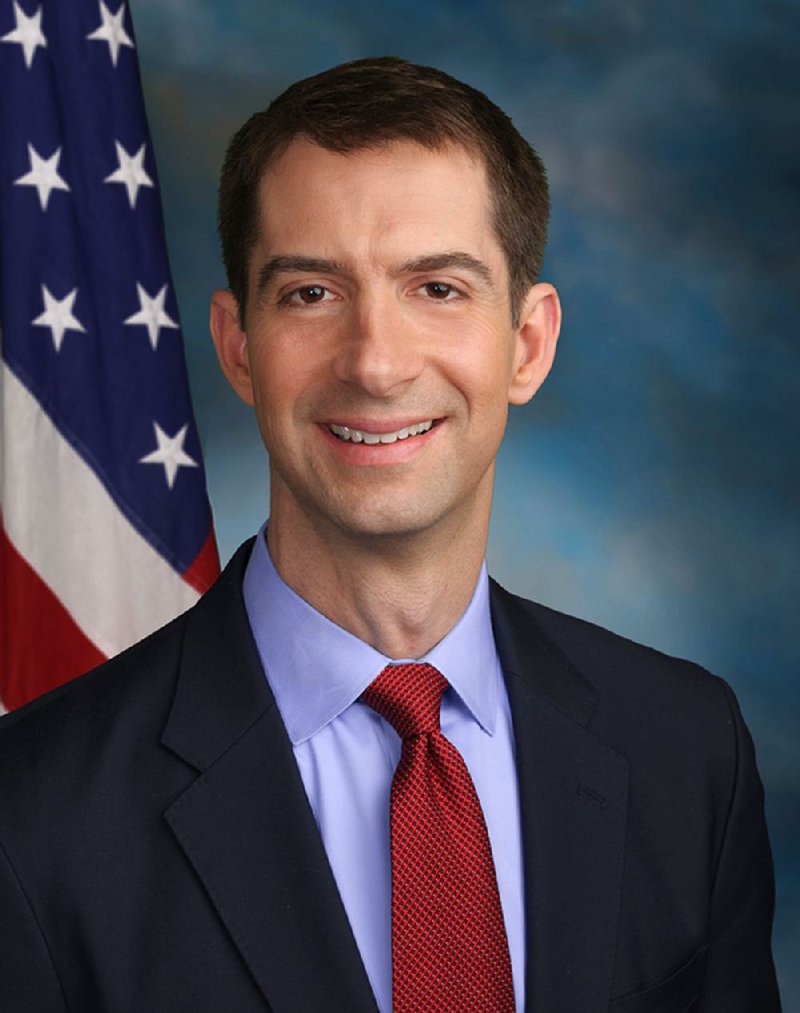U.S. Sen. Tom Cotton held a remarkable meeting Monday with the Arkansas Game and Fish Commission.
It was the first time in my 11 years covering the commission that a member of Congress convened a meeting with the commission's senior staff members. They briefed Cotton on the commission's history, its organization, budget and revenue streams. They also described the relationships with other state and federal agencies -- and nongovernment organizations -- to address wildlife and fisheries interests in civil projects and associated policies.
Cotton asked questions, but mostly he listened.
Jennifer Sheehan, chief of the AGFC's federal regulatory program, shared her perspective as the commission's liaison with the federal government. She said Arkansas is highly progressive in weaving fish and wildlife conservation into operational policies with the Corps of Engineers, Environmental Protection Agency and regional irrigation districts.
"I left here and moved back because of the way Arkansas works so closely with all of our partners," Sheehan said. "These are water security projects, and we are working to get ahead of the problems they are having in California, for example."
Sheehan said her job is to ensure that flood control and irrigation projects do not harm fish and wildlife, but also to ensure the projects benefit fish and wildlife.
Chris Racey, chief of the AGFC's fisheries division, described the challenges that exotic and invasive aquatic species impose on his staff and on the agency's resources. Asian carp and zebra mussels sap a lot of money and manpower that could be used to improve and enhance recreational fishing.
"Overall, invasive species cost our country $120 billion a year," Racey said.
The federal government spends a lot of money on preventing Asian carp from reaching the Great Lakes, Racey said, but southern states desperately need help, too.
"We need that same amount of money to come south," Racey said. "There are a lot of things we could do in our state to control Asian carp."
Kim Mullen, chief of the AGFC's education division, talked about the rising popularity of the state's youth shooting sports and school archery programs. She also said that the National Park Service wants to collaborate with the AGFC to build a permanent elk education center in Ponca. A federal commitment would make that easier.
Jeff Crow, the AGFC's director, said that hunting and fishing have a $1.7 billion economic benefit in Arkansas, equal to 2.7 percent of the state's gross domestic product.
"Our budget is $87 million, so we get a pretty good return on our investment," Crow said.
"The weight of the world can be on your shoulders when you get a times 20 return on your investment," Cotton said, "not to mention what it means for the way of life of our citizens."
Commissioner Steve Cook of Malvern said that the state needs to provide more hunting and fishing opportunities to satisfy the state's rapidly growing population. It is increasingly harder for the AGFC to buy land, Cook said, so it must be creative in securing easements and other forms of access to private land.
Cotton said it was particularly useful to hear about the commission's interactions with federal agencies. He offered his assistance in bridging the gaps between the AGFC and federal agencies, if needed.
In a one-on-one interview, Cotton said hearing the perspective of professional conservationists in the AGFC was an enlightening counterpoint to the Washington Beltway perspective.
"Sometimes I've found that some of the people in Washington can be pretty presumptuous in the way they view the environment," Cotton said. "That a lawyer working for an environmental organization might be more sympathetic than a farmer, rancher or hunter that has actually been working in the environment."
Cotton acknowledged the need for more public hunting land, and he said new shooting ranges will be increasingly important as more people concentrate in urban and suburban areas.
"I think an increasing urban population doesn't diminish enthusiasm," Cotton said. "In some ways it might increase it. The move toward competitive shooting is an interesting trend, but it's a state issue. If it's a growing interest of our people, then our government at every level -- city, county and state -- needs to try to account for that."
Communities have built skateboard parks and soccer fields to accommodate the preferences of an evolving society, Cotton said. Building shooting ranges is a continuation of that evolution.
Sports on 08/07/2016
